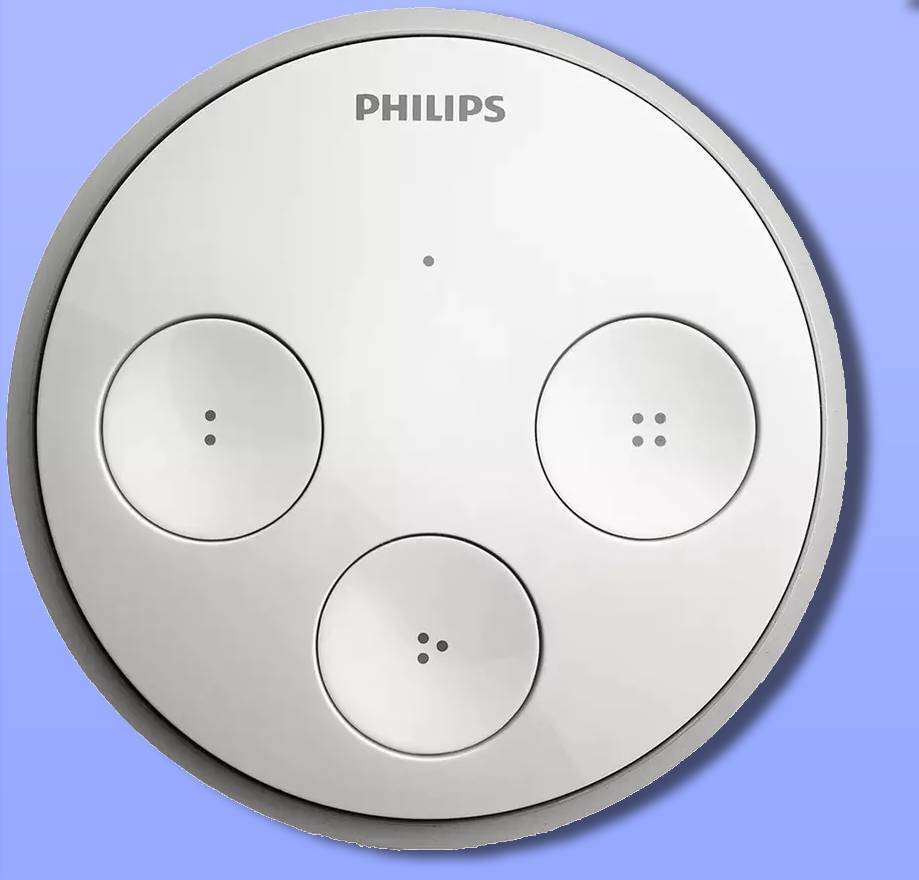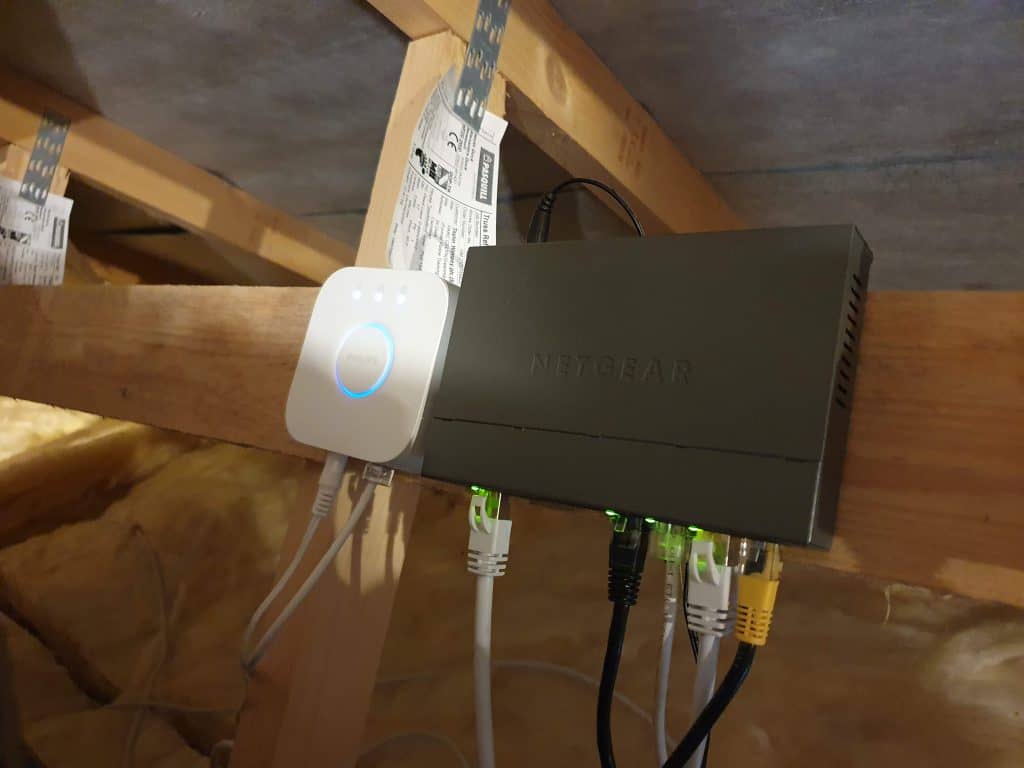The Philips Hue tap switch gives you maximum control over your smart lighting setup. Apart from that, it expands the utility of your lighting setup such that you can do so much with it. For example, you can have your lights switch from providing one ambiance to another (e.g Relaxing Evening to Party) or have an automatic wakeup call from your lights, and so on, at the flip of a switch.
While the Philips Hue tap switch is designed to work well without any issues, it can fail or stop working as expected just like any other electronic gadget. This can be due to several reasons some of which we discuss below and how to resolve them.
Possible Reasons for Philips Hue Tap Switch Failure

Your Hue tap switch may fail or stop working efficiently if:
1. It Has Inadvertently Entered the Setup Mode
The Philips Hue tap switch has a setup mode, a feature that serves the purpose of factory reset. Unfortunately, your tap switch can accidentally enter into this mode when you press the “3” button down for ten seconds.
This can happen during regular use or if you set something on top of the switch by mistake, stopping the device from functioning.
To fix it, just follow the steps you took to pair the device with a hub device you use via an app. For instance, if you use the Hue Bridge hub and app;
- Launch the app.
- Go to “Settings” and “Accessory Setup.”
- Re-add the tap switch by following the provided steps.
- Reconfigure and reconnect the tap switch to your smart lighting setup accordingly.
2. Your Hue App Has Issues
The Philips Hue tap switch can be integrated into several different third-party apps to enable users to enjoy more functionality from their tap switch device. Some of the apps you can integrate your tap switch with so that your device can do more include iConnectHue and Hue Lights developed by Apple Inc and huelights.com, respectively.
Unfortunately, these apps are prone to issues that can cause them to stop working properly. Consequently, this can also affect the normal functioning of the devices with which they are integrated.
If that’s the case for your Hue tap switch setup, you’ll need to disconnect your tap switch from the app first, then troubleshoot and repair the app before reintegrating it with the device. Just follow your software manufacturer’s troubleshoot and repair steps.
3. There’s An Issue with a Third Party Device
The Philips Hue tap switch is designed to work with numerous third-party devices seamlessly, courtesy of the ZigBee technology. Devices/software such as Apple HomeKit and HomeAssistant are all “friends” of the Hue tap switch device since they communicate and collaborate seamlessly with each other, giving you extra convenience, functionality, and control of your smart lighting.
This form of convenience is what allows you to control your lights and other interconnected devices in your smart home with voice-activated commands and even body gestures.
A problem with a third-party device integrated with your Hue tap switch can prevent your tap switch from functioning as expected. You can test to see if your tap switch issue is emanating from a third-party device or somewhere else. If you identify a device that’s causing problems for your tap switch, go ahead and troubleshoot as well as, repair that particular device, using the manufacturer’s instructions. Thereafter, you can connect it again to the tap switch, restoring your original smart lighting setup.
4. There Are Issues with Your ZigBee Network

Zigbee is what enables your smart home devices to “talk” to each other. Just like Wi-Fi, Bluetooth, or any other wireless communication technology (WCT), this WCT is prone to a myriad of issues that can hinder its capabilities.
One such issue is signal range. ZigBee is more limited than Wi-Fi in terms of signal range. That means if you put it too far away from your tap switch, it may not be able to allow your tap switch to connect and communicate with other devices in your smart home set up properly.
Find out if ZigBee is the cause of your tap switch not functioning correctly or failure. Then troubleshoot and fix it using the manufacturer’s directions before reconnecting it to your smart home ecosystem, if it is. For instance, if a limited range is the cause of your device’s failure, try moving the ZigBee bridge/hub closer to the tap switch to see if that resolves the problem.
5. Your Tap Switch Has An Internal Power Failure Issue
Though very rarely, your Philips Hue tap switch may fail or stop working as expected due to an internal power failure. Note that this device is powered by “kinetic” energy, which is created each time you press a button on it.
Now, the Philips tap switch is designed to generate energy this way until after 50,000 button presses are surpassed. In other words, the buttons won’t be able to generate energy for your tap switch each time they are pressed, once you exceed this limit. That means your device will lack energy and hence it will not be able to work.
However, you don’t have to worry about that though because it’s not so easy to surpass this limit. That’s because even if you are a superuser, you’ll barely press your switch more than 50 times a day, which otherwise should give you 1000 days of using your switch before it can no longer generate a source of energy of its own.
6. Your Tap Switch Has a Broken Button
Last but not least, having a broken button on your Philips Hue tap switch can cause your device to stop working as expected. Yet a button on the Hue tap switch can break or get damaged due to getting stuck, rattling around in its housing, wear and tear of daily usage, or any other reason.
There are two main ways to fix this issue. One is to take your tap switch back to your vendor for replacement if it’s still covered by the warranty. Two is to disassemble the device and fix or replace the button if you are an expert in this kind of thing.
Final Thoughts
The Philips Hue tap switch serves as an important accessory for your smart lighting setup. This device works to give the interconnected devices within your smart home extra functionality. On top of that, it provides you with additional control over your devices including the ability to control your lights and door locks conveniently with voice commands.
However, this device is prone to failure just like any other device. Notably, several factors can cause your Philips Hue tap switch to fail or stop working as expected. These include if your switch has accidentally entered the setup mode, your Hue App has issues, or there’s an issue with a third-party device connected to it. Other causes of Philips Hue tap switch problems are issues with your ZigBee network, an internal power failure issue with the switch, or if there’s a broken button on the switch.
The good news is that a failed Hue tap switch or one that is not working as expected can be easily fixed. If you have one such tap switch, use any applicable tip from the tips above to restore your Philips Hue tap switch to its former working condition.